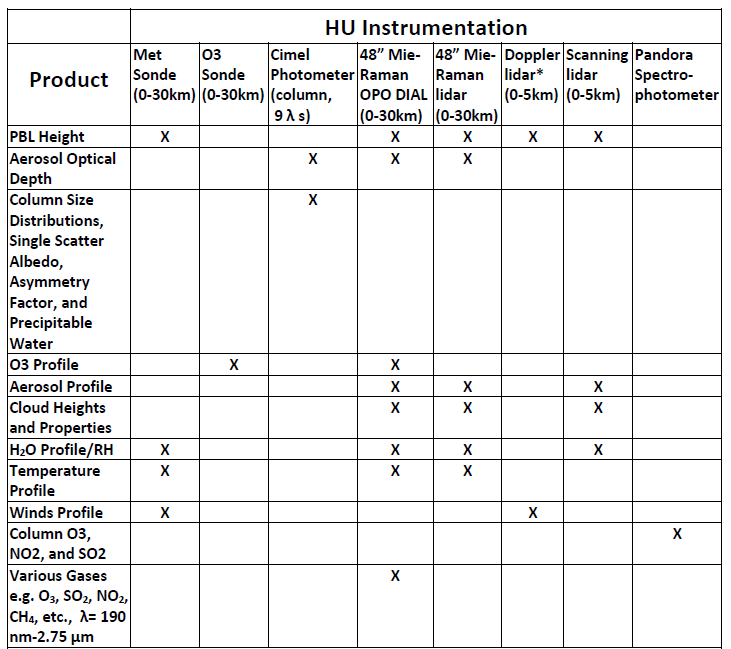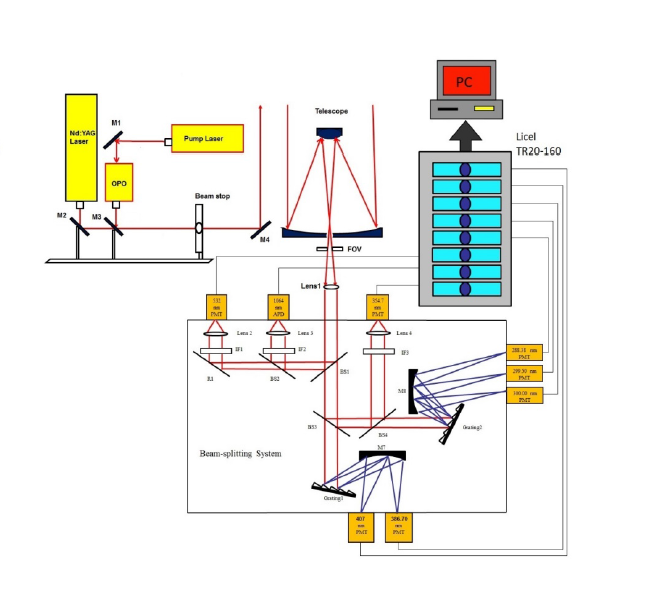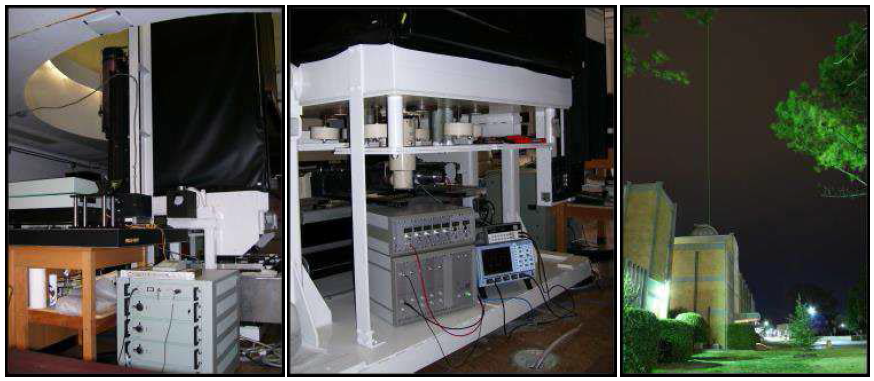Hampton University Lidar Laboratory (HULL)

The HU lidar located in the 4th floor of Turner Hall system consists of a zenith-viewing Nd:YAG laser that operates at three fixed wavelengths (1064, 532, and 355 nm), a 48-inch non-coaxial Cassegrainian-configured telescope receiver, a light separation system that uses beam splitters and interference filters, a detecting system including photomultiplier tubes (PMT) and avalanche photodiodes (APDs) and a Licel optical transient recorder. The system can be configured to measure elastic scattering from aerosols and clouds at the three laser output wavelengths, and at the same time measure Raman scattering excited by the 355-nm laser pulses. High-resolution (7.5 m) backscatter measurements extend from the boundary layer and free troposphere to the lower and middle stratosphere (~30 km). Recently, a tunable optical parametric oscillator (OPO) was incorporated into the lidar system. The OPO allows to optimize (tune) the wavelength choices and in that sense are better than fixed-frequency wavelength shifters such as Raman cells. The wavelength tuning range of our OPO is from 192 nm to 2750 nm. A steering mirror whose axis is aligned with a receiving telescope axis directs these laser outputs into the atmosphere. The laser backscatter is collected by a 48-inch diameter telescope and split into specific wavelength bands by a beam separation unit.
The beam separation combines filters and two blazed grating systems for dispersion of the return backscattering to various channels. Using filters and a grating system makes a beam-splitting system simple, compact, and easy to change or add other spectral channels for measurements. Wavelengths, for example, 288.38 nm, 299.5 nm, 300 nm, 407 nm, 386 nm, 532 nm and 1064 nm are focused to PMTs and APD and recorded by a Licel data-collecting system for measurements of aerosol, water vapor and ozone. Cimel Sunphotometer (NASA AERONET), Pandonia Spectrometer (NASA PANDORA), Inter-met Sounding System and ASSIST II Atmospheric Sounder Spectrometer, Lufft CHM15k Ceilometer and In-situ aerosol air sampler complement the vertical profiling capabilities of the lidar laboratory. A doppler Wind Lidar is occasionally available in a joint collaboration with the Army Research Laboratory. List of data products are listed.



